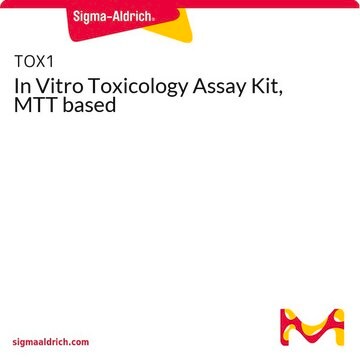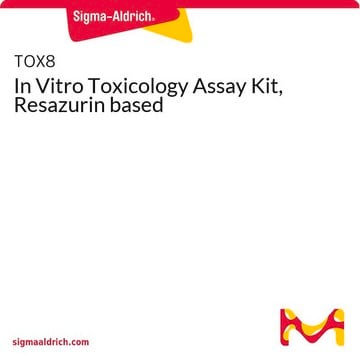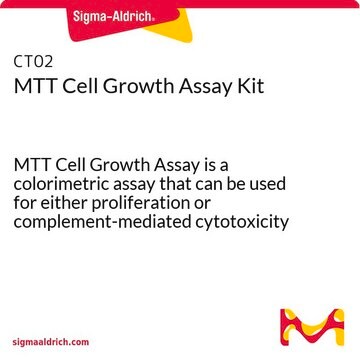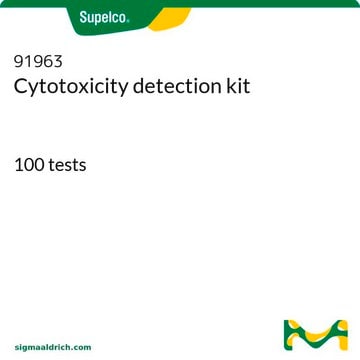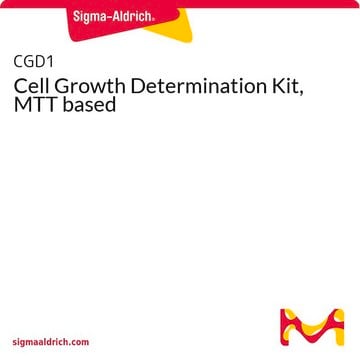TOX7
In Vitro Toxicology Assay Kit, Lactic Dehydrogenase based
Sinónimos:
LDH cytotoxicity assay
About This Item
Productos recomendados
form
liquid
usage
kit sufficient for 500 tests
packaging
pkg of 1 kit
storage condition
dry at room temperature
technique(s)
protein quantification: suitable
λmax
490 nm
application(s)
cell analysis
detection
detection method
colorimetric
Storage temp.
−20°C
General description
Application
- to detect lactate dehydrogenase release in human umbilical vein endothelial cells (HUVECs) and human cardiac myocytes (HCMs) for lactate dehydrogenase (LDH) assay
- to determine the activity of lactate dehydrogenase leakage of MDA-MB-231 cells
- to examine the activity of LDH in RAW 264.7 cells , in LDH cytotoxicity assay in human cell lines
- for spectrophotometric measurement of viable cells. Absorbance of converted dye is measured at a wavelength of 490 nm.
Biochem/physiol Actions
.
hcodes
pcodes
Hazard Classifications
Aquatic Chronic 3
Storage Class
10 - Combustible liquids
Certificados de análisis (COA)
Busque Certificados de análisis (COA) introduciendo el número de lote del producto. Los números de lote se encuentran en la etiqueta del producto después de las palabras «Lot» o «Batch»
¿Ya tiene este producto?
Encuentre la documentación para los productos que ha comprado recientemente en la Biblioteca de documentos.
Los clientes también vieron
Artículos
Quality control guidelines to maintain high quality authenticated and contamination-free cell cultures. Free ECACC handbook download.
Cell based assays for cell proliferation (BrdU, MTT, WST1), cell viability and cytotoxicity experiments for applications in cancer, neuroscience and stem cell research.
Nuestro equipo de científicos tiene experiencia en todas las áreas de investigación: Ciencias de la vida, Ciencia de los materiales, Síntesis química, Cromatografía, Analítica y muchas otras.
Póngase en contacto con el Servicio técnico


